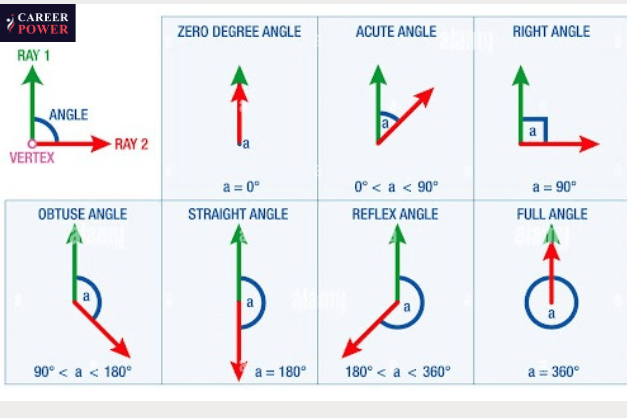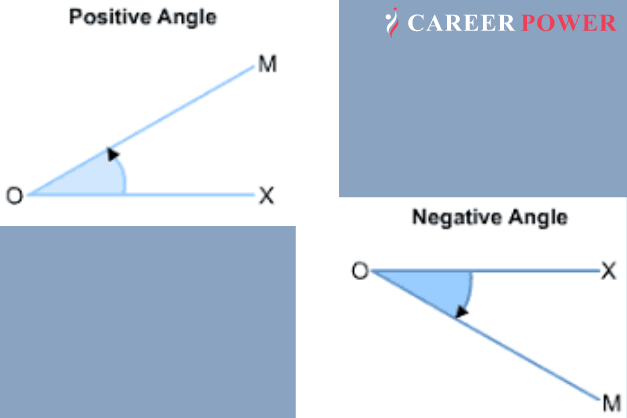Types of Angles: The word angle is derived from the Latin word “angulus” which is formed by joining two rays together at a common point. This common point is referred to as a node or vertex. The two rays are referred to as arms. Angle is generally represented by '∠'. There are various types of angles in geometry. Angles are an important subject of geometry. So this article we will discuss different types of angles.
Types of Angles
The two arms of the angle combined together differently to form different types of angles, such as angles which is at the same position are called zero angles, angles that are more than 0° but less than 90° are called acute angles, angles that is exactly 90° is called as Right angle, and other angles which discussed in detail below. There are different types of angles, that is-
- Magnitude
- Rotation
Types of Angles Based on Magnitude
Based on Magnitude there are seven different types, these are-
- Zero Angles
- Acute Angle
- Right Angles
- Obtuse Angle
- Straight Angle
- Reflex Angle
- Complete/Full Angle

| Types of Angles Based on Magnitude | |||
| S.No. | Types of Angles | Definition | Represented by |
| 1. | Zero Angle | The Angle is formed when both the angle are at the same position. | 0° |
| 2. | Acute Angle | The Angle is formed when both arms lie between 0° and 90°, that is greater than 0° and less than 90° | 0°<a< 90° |
| 3. | Right Angle | The angle which measures exactly 90° is a right angle | a=90° |
| 4. | Obtuse Angle | An angle whose measure is greater than 90° but less than 180° | 90°<a< 180° |
| 5. | Straight Angle | The angle whose measure is exactly equal to 180° | a =180° |
| 6. | Reflex Angle | The Angle is formed when both arms lie between 180° and 360°, that is greater than 180° and less than 360° | 180°<a< 360° |
| 7. | Complete/Full Angle | The angle whose measure is exactly equal to 360° | a =360° |
Types of Angles Based on Rotation
Based upon angles based upon Rotation, these are-
- Positive Angles
- Negative Angles

| Types of Angles Based on Rotation | ||
| S.No. | Types of Angles | Definition |
| 1. | Positive Angles | Angles which are measured in an anti-clockwise direction from base. |
| 2. | Negative Angles | Angles which are measured in a clockwise direction from base. |
Types of Angles Pairs
Angle Pairs are defined as when two lines share a common endpoint, called a Vertex then an angle is formed between these two lines. There are five different types of angle pairs, that is-
- Complementary angles
- Supplementary angles
- Linear pair
- Adjacent angles
- Vertically opposite angles
| Types of Angles Pairs | ||
| S.No. | Types of Angles Pairs | Definition |
| 1. | Complementary angles | When the sum of angles is 90°, Such angles are called complementary angles. |
| 2. | Supplementary angles | When the sum of angles is 180∘ are known as supplementary angles. When two angles are supplementary, each angle is called as supplement of the other. |
| 3. | Linear pair | A linear pair of angles are formed when two lines intersect. Two angles are said to be linear if they are adjacent angles formed by 2 intersecting lines. The measure of a straight angle is 180° |
| 4. | Adjacent angles | Adjacent angles are two angles that have a common vertex and a common side but do not overlap. |
| 5. | Vertically opposite angles | When two lines intersect with each other the opposite angles are equal. |
| Related Links- |
| Types of Triangles |
